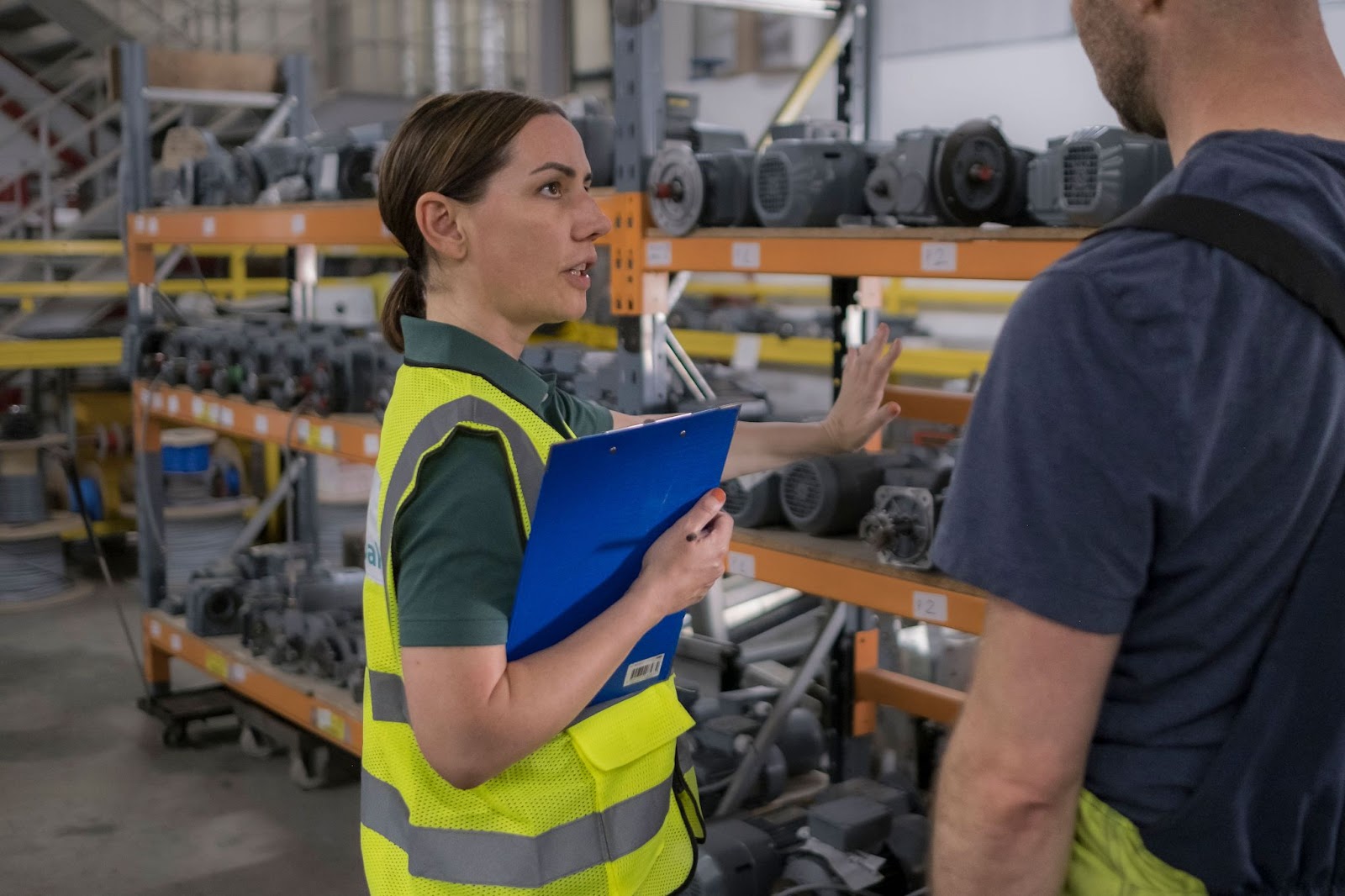A certified ergonomics assessment specialist plays an important role in evaluating and enhancing these environments to prevent injuries like carpal tunnel syndrome and lower back pain. Becoming a certified ergonomics assessment specialist is a rewarding path if you’re interested in workplace safety, health, or human resources.
Whether you’re switching careers or upskilling in your current role, this casual yet professional guide will help you understand how to become a certified ergonomics assessment specialist and thrive in the field.
What Does an Ergonomics Assessment Specialist Do?
An ergonomics assessment specialist (often simply called an ergonomist or ergonomics specialist) is a professional who evaluates work environments and tasks to ensure they fit the workers and minimize the risk of injury. In practical terms, this means looking at how people sit, stand, lift, type, or perform any job duty, and then recommending adjustments to make those tasks safer and more efficient.

Main responsibilities of ergonomics assessment specialists include:
- Observing and analyzing work activities: They often visit offices, factories, or other workplaces to watch how employees perform their jobs. By documenting workers’ movements and postures, specialists can identify ergonomics risk factors like repetitive motions, awkward postures, or heavy lifting.
- Recommending improvements: After an evaluation, an ergonomics specialist suggests changes to reduce strain and injury risk. This may involve redesigning a workstation, adjusting the height of a desk or machinery, introducing ergonomics tools or furniture, or modifying work processes to better fit the worker. They aim to create a safer, more comfortable work environment that boosts productivity and employee well-being.
- Designing or selecting equipment: In some cases, specialists help design tools or choose equipment (like chairs, keyboards, or lifting devices) that improve comfort and safety. For example, they might recommend an anti-fatigue mat for someone who stands all day, or an ergonomics mouse for someone with wrist pain.
- Training and education: A big part of the job is educating employees and managers. Ergonomics specialists often train workers on proper posture, safe lifting techniques, and how to adjust their own workstations. They might hold workshops or one-on-one coaching to ensure people use ergonomicsally sound practices.
- Reporting and documentation: After assessments, ergonomists usually write technical reports or summaries of their findings. These reports document identified issues and recommended solutions so that employers have a clear action plan. Good writing and communication skills are important for this aspect of the role.
Ergonomics assessment specialists serve as workplace problem-solvers who bridge the gap between employees and their work tasks. By applying knowledge of human anatomy and safety, they make jobs fit people, rather than forcing people to fit the job. The result is often fewer injuries, higher productivity, and more satisfied workers, which is a win-win for employees and employers.
How to Become a Certified Ergonomics Assessment Specialist (Step-by-Step)
Becoming a certified ergonomics assessment specialist involves building your knowledge base, completing a certification course, and applying what you learn on the job. The process unfolds in several steps, from understanding the basics of ergonomics to putting your new credential into action.
1. Learn About the Field of Ergonomics
Start by exploring what ergonomics is and what specialists in this field actually do. Research how workstation adjustments can reduce injuries or how poor ergonomics can lead to issues like carpal tunnel or back pain. Free resources on OSHA’s website and various ergonomics blogs offer a good introduction. This early phase helps confirm your interest in pursuing the career. Some people chat with working ergonomists or read career profiles to get a sense of the role in real life.
2. Build a Foundation with Education or Experience
A specific degree isn’t strictly required, though a background in health, safety, or engineering goes a long way. Many specialists hold degrees in occupational health and safety, kinesiology, physical or occupational therapy, industrial engineering, or psychology. Most occupational health and safety specialists (including ergonomists) have at least a bachelor’s in a related field.
A degree is helpful but not mandatory if you have relevant work experience as safety officers, HR professionals with a wellness focus, and rehabilitation therapists often transition into ergonomics. Knowledge of human anatomy, injury risk factors, and basic safety regulations lays the groundwork for certification training. Some people take short courses or workshops in ergonomics fundamentals before enrolling in a more formal program. OSHA’s Principles of Ergonomics is one such course that covers how to recognize risk factors and implement control methods.
3. Choose a Reputable Ergonomics Certification Program
Researching which certification fits your goals is crucial. Options differ in depth, cost, prerequisites, and focus.

One popular entry-level choice is the Certified Ergonomics Assessment Specialist (CEAS) from The Back School, which accepts anyone interested—no prior degree or experience needed. It’s offered online or as a 1–2-day workshop, covering OSHA-compliant assessment methods for offices, industrial settings, and healthcare.
On the opposite end is the Board of Certification in Professional Ergonomics (BCPE), which grants the Certified Professional Ergonomist (CPE) title. The CPE typically requires a bachelor’s or master’s degree, years of experience, and a comprehensive exam.
Many other programs fall between these extremes, with various formats (online or in-person), costs, and recognition levels. Look into whether a particular credential is highly regarded in the industry you want to serve. Office-focused professionals might lean toward CEAS or Humanscale’s offerings, while those aiming for research or government roles might prefer BCPE’s pathway.
4. Complete the Training and Certification Requirements
After choosing a program, commit to the coursework and evaluation steps. Certification programs often involve a blend of instruction, practical activities, and exams. Entry-level certificates such as CEAS may require attending a workshop and passing an exam at the end.
CEAS I, for instance, involves using ergonomics assessment tools in a post-course test. Some programs also expect you to conduct real-world assessments and submit reports, adding a hands-on element. Advanced certifications like the CPE or Certified Industrial Ergonomist need proof of your degree, practical experience, and a proctored exam.
Whichever level you pursue, study the course material thoroughly, do any case studies, and pass the final evaluation. Successful completion usually grants you a certificate and allows you to use a professional designation after your name. Focusing on core ergonomics assessment tools (checklists, RULA, REBA, NIOSH lifting formulas) is especially useful for day-to-day job performance.
5. Apply Your Skills (and Continue Learning)
Once certified, showcase this new credential on your resume and LinkedIn. Prospective jobs include Ergonomics Specialist, Ergonomics Consultant, Health and Safety Specialist, or Occupational Therapist (with an ergonomics focus). Employers range from tech companies to manufacturing plants and insurance firms. Each setting broadens your experience.
Some professionals move on to advanced certification levels or pick up additional credentials when they’re ready. For example, CEAS I might lead to CEAS II and III, which teach deeper analysis and program management. Practitioners who begin with an office ergonomics certificate sometimes add an industrial credential later. The field evolves with new technologies and guidelines, so staying up-to-date is wise. Consider joining professional networks such as the Human Factors and Ergonomics Society or attending relevant webinars. Some certifications require renewal every few years. Even without mandatory renewal, seeking further training or CEUs helps keep skills current. Expanding your knowledge in this way transforms you from a freshly certified specialist into a seasoned professional.
These steps build a clear path from initial interest to genuine expertise. The next section highlights top certification programs worth exploring as you plan your ergonomics career.
Reputable Ergonomics Certification Programs
There are several well-regarded certification programs and credentials in the ergonomics field. Here are some of the most reputable ones that can help you become a certified ergonomics assessment specialist:
| Certification Name | Provider | Description | Link |
| Certified Ergonomics Assessment Specialist (CEAS) | The Back School | Entry-level certification for professionals in safety, healthcare, HR. Teaches ergonomics risk assessment for offices, industrial, and healthcare environments. Offers CEAS I, II, III. | thebackschool.net |
| Certified Professional Ergonomist (CPE) | Board of Certification in Professional Ergonomics (BCPE) | High-level credential for career ergonomists. Requires a degree and years of experience. Recognized globally. | bcpe.org |
| Certified Industrial Ergonomist / Certified Associate Ergonomist | Oxford Research Institute | Tiered certifications for industrial ergonomics and human factors. Requires varying degrees of experience and education. | oxfordresearch.org (example link) |
| Certified Office Ergonomics Specialist (COESp) / Certified Remote Ergonomics Specialist (CRESp) | Worksite International | Focus on office and remote ergonomics assessments. Includes mentorship and practical training. No degree required. | worksiteinternational.com |
| Certified Office Ergonomics Evaluator (COEE) | Humanscale | Two-day course for in-office and remote ergonomics assessment. Designed for therapists, safety pros, facilities managers. | humanscale.com |
| Industrial Ergonomics Evaluator Certification | OccuPro | 3-day intensive course focusing on industrial ergonomics. Teaches measurement tools and risk evaluation methods. | occupro.net |
| Principles of Ergonomics (OSHA #2255) | OSHA | Short, 18-hour course teaching ergonomics principles and risk factor recognition. No credential, but valuable training. | osha.gov |
These are just a few of the credible programs out there. Other mentions include the Matheson Ergonomics Evaluation Certification (an introductory course focusing on rehab professionals), the American Kinesiotherapy Association’s ergonomics certification (16-hour advanced course for therapists), and emerging programs in specialized areas like healthcare ergonomics (e.g. a Healthcare Ergonomics Assessment Specialist, HEAS, offered by The Back School).
When evaluating any certification, consider if it’s endorsed by reputable bodies. For example, certifications with recognition from the International Ergonomics Association (IEA) or that align with ANSI or ISO ergonomics standards can indicate quality. Ultimately, the “best” certification is one that matches your career stage and goals – you might even obtain multiple certifications over time (many professionals do a foundational cert like CEAS and later pursue a CPE for advanced credibility). Remember that each credential adds to your toolkit and credibility as an ergonomics assessment specialist.
Skills Needed to Succeed as an Ergonomics Assessment Specialist
Being successful in ergonomics is not just about having a certificate – it also requires a blend of technical knowledge, analytical ability, and people skills.

Here are the skills and qualities that top ergonomics assessment specialists possess:
- Strong Analytical and Observational Skills: Ergonomics work is like detective work – you must be able to observe work processes closely and analyze data. This means noticing subtle things (e.g. an employee’s slight shoulder hunch or the height of a workbench) and understanding their significance. You’ll often use measurement tools or checklists, so being comfortable with basic math and analysis is important. Specialists need to interpret ergonomics assessment data (like angles, weights, frequencies) and draw conclusions. Being detail-oriented is part of this skill set – small factors can make a big difference in an ergonomics eval.
- Knowledge of Anatomy, Physiology, and Ergonomics Principles: A solid understanding of how the human body works is crucial. You should know musculoskeletal anatomy (so you can identify which movements stress which body parts) and basics of physiology (e.g. how fatigue builds up). Ergonomics principles – such as neutral posture, proper lifting mechanics, anthropometry (human body measurements) – form your technical foundation. Additionally, knowledge of workplace safety regulations and guidelines (like OSHA standards, NIOSH lifting recommendations, etc.) is very helpful. This helps you ensure your recommendations are in line with safety laws and best practices.
- Problem-Solving and Creativity: Every workplace and worker is a little different, and constraints like budget or space can limit solutions. Great ergonomics specialists are creative problem-solvers who can think of practical solutions to reduce risk. For example, if a job task is causing back injuries, the solution could be training on technique, introducing a mechanical lift, reorganizing the workflow, or all of the above. You’ll often brainstorm multiple fixes. The ability to adapt general ergonomics principles to specific situations (and sometimes invent clever low-cost fixes) sets you apart. This goes hand-in-hand with analytical skills – you identify the problem, then figure out how to solve it.
- Communication and Training Skills: An ergonomics specialist must be a good communicator. You’ll be interviewing employees and listening to their concerns, as well as explaining your recommendations to both workers and management. Being able to translate technical ergonomics findings into clear, actionable advice is key. Often, you’ll conduct training sessions or briefings, so you should be comfortable speaking to groups and teaching people how to adjust their workstations or postures. Empathy and interpersonal skills are important too – you want to encourage workers to adopt changes without making them feel blamed for doing something “wrong.” In short, you need to consult and coach effectively.
- Technical Writing and Documentation: Because reporting is a part of the job, you should be able to write concise, informative reports. This includes documenting the current issues, risk assessment results, and the recommendations with justification. Good writing skills ensure that your reports persuade decision-makers to implement your suggestions. Sometimes you might also create ergonomics guidelines or contribute to policy documents, so clarity and accuracy in writing is a must.
- Physical and Computer Skills: Ergonomics specialists don’t typically do heavy labor, but you should be willing to do some physical activity – for example, demonstrating how to lift properly, rearranging a workstation, or using tools to measure force. Having a baseline level of fitness and the ability to “walk the floor” in industrial settings is helpful. Additionally, computer proficiency is useful: you may use ergonomics software or basic office software to analyze data and prepare reports. Familiarity with common office hardware (chairs, keyboards, monitors) and industrial equipment is also beneficial so you can make informed recommendations about them.
- Continuous Learning Mindset: Finally, the field of ergonomics evolves with new research and products. A great ergonomist is curious and committed to learning. They stay updated on the latest in ergonomics office furniture, new assessment technologies (for example, wearable sensors that measure posture), and evolving best practices (like understanding ergonomics for remote work, which has become very relevant). Being active in professional communities or forums can help you keep your skills sharp. Essentially, remain adaptable – each new workplace you assess will teach you something and add to your experience.
By cultivating these skills, you’ll not only be able to earn your certification but also excel in day-to-day work as an ergonomics assessment specialist. Many of these skills will develop with experience – for instance, your eye for spotting issues will get sharper the more assessments you do.
If you come from a background like therapy or safety, you might already have a head start on some of these competencies (as those professions share similar skills). If not, don’t worry: your certification training will introduce many of these areas, and you can actively work on them as you grow in this career.
Job Outlook and Potential Salary
The good news for aspiring ergonomics assessment specialists is that the job outlook is positive. Companies increasingly recognize the value of ergonomics in reducing injuries and improving productivity, which drives demand for specialists.
Here are the prospects and earning potential of becoming a ergonomics assessment specialist :
Job Outlook
In the broader category of health and safety specialists (which includes ergonomists), employment is projected to grow. The U.S. Bureau of Labor Statistics projects 14% growth from 2023 to 2033 for occupational health and safety specialists and technicians – much faster than the average for all jobs. This is a significant jump, reflecting renewed emphasis on workplace health (possibly influenced by greater awareness of employee well-being in recent years). Growth is fueled by factors like an aging workforce – as workers age, employers invest more in ergonomics to prevent injuries – and a general focus on reducing workers’ compensation costs through preventive measures.
Ergonomists may find jobs across various industries (tech, manufacturing, healthcare, government, etc.), and some work for consulting firms or as independent consultants. In short, the career prospects are solid, and having a certification can improve your competitiveness in this growing field.
Salary Expectations
Salaries for ergonomics specialists can vary widely based on factors like your level of certification/education, experience, industry, and location. Because many ergonomics roles fall under the umbrella of “occupational health and safety specialists,” we can look at that data for a general idea. According to the BLS, the median annual wage for occupational health and safety specialists was around $81,000 as of May 2023. This means half earn more than that, and half earn less.
Entry-level ergonomics consultants or those in technician-level roles might start in the lower range (perhaps in the $50k–$60k range), whereas experienced certified professionals can earn closer to or above the median. Some sources indicate that the average salary for “ergonomists” or ergonomics professionals in the U.S. is about $80k–$85k per year, which aligns with the BLS data.
If you hold a top-tier certification like CPE and have a graduate degree, you could command higher salaries, especially in industries like tech or biotech where specialized knowledge is valued. Additionally, roles that incorporate ergonomics as part of broader responsibilities (for example, an EHS (Environment, Health, and Safety) Manager with ergonomics expertise) might have higher salary ranges. Geographic location matters too – areas with a high concentration of corporate offices or manufacturing (and higher cost of living) often pay more.
Many ergonomics specialists work as consultants or contractors, either independently or for consulting firms. In those cases, income might be project-based or hourly. Freelance ergonomics assessors can set their own rates; some charge per assessment or per hour. An advantage in consulting is that once you build a reputation (helped by that certification credibility), you can attract a steady stream of clients and potentially earn a premium for your expertise. On the flip side, consulting can be variable and requires business development effort.

Overall, you can expect a comfortable salary that grows with experience and specialization. While you might not start at an extremely high wage, the combination of rising demand and the ability to prevent costly injuries gives you good leverage in the job market. Plus, as companies continue prioritizing employee wellness, the role of ergonomics specialists is likely to become even more integral – potentially leading to higher salaries and more leadership opportunities (e.g., managing ergonomics programs, leading safety teams, etc.).
Job Titles to Look For
If you’re job hunting, note that ergonomics assessment specialists might not always be listed under that exact title. Also search for titles like:
- Ergonomist
- Ergonomics Specialist
- Ergonomics Consultant, Occupational Health Specialist
- Injury Prevention Specialist
- Human Factors Specialist
- Safety Specialist (Ergonomics).
Reading job descriptions will help identify if the role focuses on ergonomics assessments. Many postings will mention needing “ergonomics certification” or experience, which is where your efforts in becoming certified will pay off.
Ready to kickstart your career as a Certified Ergonomics Assessment Specialist? Ergo Global offers tailored training programs designed to equip you with the skills and credentials needed to excel in the field.
Join our global network of ergonomists and make a meaningful impact on workplace well-being. Learn more and enroll today.

